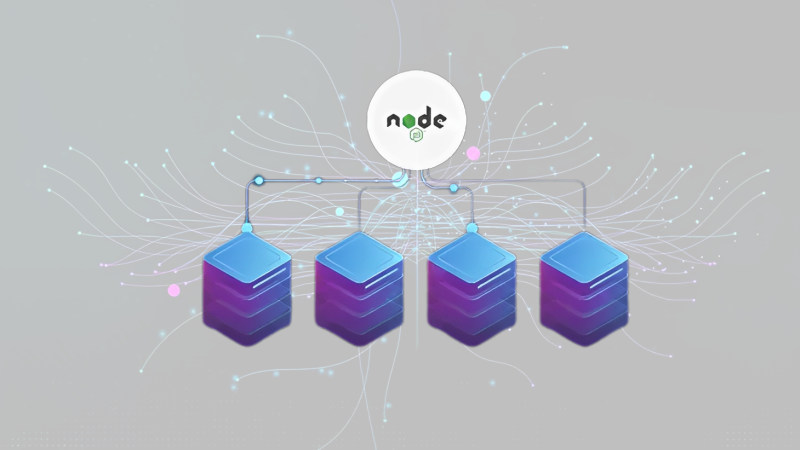Introduction: Microservices Pipeline
In the high speed universe of microservices improvement, the decision of continuous Integration and continuous delivery CI/CD) devices assumes and critical role in smoothing out work processes, guaranteeing quality, and speeding up opportunity to-showcase. Two well known competitors in this field are Jenkins and GitLab CI/CD. In this article, we’ll investigate the vital highlights of each apparatus and assist microservices developers with pursuing an educated choice on choosing the right CI/CD champion for their pipelines.
Jenkins: The Veteran CI/CD Maestro
Jenkins, an open-source automation server, has been a sturdy player in the CI/CD domain for nearly 10 years. Microservices engineers frequently go to Jenkins for its broad module environment, adaptability, and hearty local area support. Its flexibility to adapt to different programming dialects and fabricate devices makes it an adaptable decision for different microservice conditions.
Key Highlights
- Plugin system: Jenkins has a lot of plugins that let developers work with a lot of different technologies and tools.
- Build Pipelines: Jenkins works with the making of perplexing form pipelines, considering complicated work processes and restrictive arrangements.
- Community support: The Jenkins community is lively, giving an abundance of assets, modules, and answers for normal difficulties.
Drawbacks
- Complexity: The overflow of highlights can cause Jenkins to seem complicated, requiring a more extreme expectation to learn and adapt for new clients.
- Maintenance Overhead: The requirement for manual updates and support can be a disadvantage for groups searching for a more smoothed out experience.
GitLab CI/Cd: Integration Nirvana
Historical Context
GitLab CI/CD, coordinated into the GitLab platform, offers an all-in-one answer for rendition control, CI/CD, and that’s only the tip of the iceberg. Conceived out of the GitLab variant control framework, it’s an appealing decision for microservices developers looking for a brought together stage for their improvement lifecycle.
Key Highlights
- Inherent CI/CD: GitLab CI/CD is consistently coordinated into the GitLab platform, offering a durable climate for code forming, CI, and Compact disc.
- Framework as Code (IaC): GitLab CI/CD upholds Framework as Code, permitting engineers to characterize and deal with their foundation close by application code.
- Container Registry: The built-in compartment vault works on the capacity and the executives of Docker pictures.
Drawbacks
- Restricted Module Ecosystem: While GitLab CI/CD covers the fundamentals, its module environment isn’t quite as broad as Jenkins, which might restrict reconciliations with specific devices.
- Expectation to learn and adapt for Cutting edge Highlights: Dominating high level elements like Kubernetes arrangements might demand extra investment and aptitude.
Microservices and Cloud Native: A Match Made in DevOps
In this article, we’ll investigate how Microservices Software Development and DevOps combine and make software projects super successful.
Picking the Right Apparatus for Your Microservices Pipeline
1) Contemplations for Jenkins
- Flexibility: Assuming your microservices environment requires assorted mixes and adaptability in pipeline plan, Jenkins may be the ideal decision.
- Local area Backing: When it comes to troubleshooting and exchanging best practices, the large Jenkins community can be an extremely useful resource.
- Heritage Frameworks: For associations with laid out Jenkins pipelines and knowledge of its biological system, the change might be smoother.
- Incorporated Work Process: In the event that you focus on a brought together stage for variant control, CI, and continuous delivery, GitLab CI/CD offers a consistent encounter.
- Underlying Elements: GitLab CI/CD’s inherent highlights, like IaC and compartment vault, give an incorporated arrangement without depending on outer instruments.
- GitLab Biological System: Associations previously involving GitLab for adaptation control might find it worthwhile to use the whole GitLab biological system.
2) Flexibility vs Integration : The Dance of Choice
In the mind boggling universe of microservices improvement, the decisions among Jenkins and GitLab CI/CD frequently revolve around the fragile harmony between flexibility and integration.
Jenkins: The Agile Competitor
Jenkins stands apart for its unrivaled adaptability. With a broad module environment, engineers can tailor their CI/CD pipelines to explicit necessities. This adaptability takes into consideration a different scope of reconciliations with different devices and innovations, offering a unique climate for microservices projects.
GitLab CI/CD: The Coordinated Three step dance
On the opposite side of the dancefloor, GitLab CI/CD tempts with its coordinated work process. As a component of the exhaustive GitLab platform, CI/CD flawlessly lines up with rendition control, disposing of the requirement for disconnected toolsets. This incorporated methodology smooths out the improvement cycle, offering a bound together climate where code forming, CI, and CD fit easily.
Thoughts for Microservices Designers
- Project Complexity: On the off chance that your microservices biological system requests different incorporations and a redid pipeline, the adaptability of Jenkins may be the best fit.
- Unified Work Process: For people who focus on a consistent, across the board insight with rendition control, CI, and Compact disc, the incorporated work process of GitLab CI/CD can be a distinct advantage.
- Transition Complexity: Assess the work and potential interruptions related to changing from heritage frameworks to a more current CI/CD approach.
- Ecosystem Consistency: On the off chance that your association is well established in GitLab, the coordinated idea of GitLab CI/Compact disc could give a smoother change.
Microservices Movement: Adjusting CI/CD with Development Goals
In the microservices dance, each move ought to be synchronized with more extensive development objectives, specialized prerequisites, and the extraordinary qualities of microservices developers.
Amicability with Hierarchical Objectives
- Evaluate how every CI/CD instrument lines up with the general goals of the association.
- Consider whether the picked apparatus can adjust to the versatility and nimbleness requests of microservices advancement.
Specialized Necessities Artful Dance
- Look at the specialized abilities of Jenkins and GitLab CI/CD with regards to microservice prerequisites.
- Check to see that the tool you select meets particular requirements like containerization, scalability, and compatibility with microservices frameworks.
Thought for Microservices Developers
- Objectives of the Organization: Know what your company’s strategic goals are and how each CI/CD tool helps you reach them.
- Specialized Fit: Assess the specialized abilities of the two apparatuses and their arrangement with the complexities of microservices advancement.
Taking the Last Jump: The Decision-Making Mistake
- As the microservices dance approaches its crescendo, microservices developers
- Must make the final move taking into account not only technical features but also the organization’s overall impact.
Jenkins or GitLab CI/Compact disc: The Amazing Finale
- Final Evaluation: Return to the key contemplations, gauging the adaptability of Jenkins against the coordinated work process of GitLab CI/Disc.
- Team Skillsets: Think about how proficient your development team is with either tool and how easily they can adapt to the CI/CD partner you choose.
Lining up with Authoritative Goals
- Long haul vision: Check to see that the organization’s long-term vision is compatible with the chosen CI/CD tool.
- Scalability: Evaluate how well the apparatus upholds the adaptability objectives of microservices engineering.
Conclusion
In the domain of microservices advancement, the decision among Jenkins and GitLab CI/CD eventually relies upon your group’s particular necessities, inclinations, and the current environment. The two apparatuses have their benefits, and the choice ought to line up with your association’s objectives, specialized prerequisites, and the aptitude of your microservices developers team. Whether you select the carefully prepared veteran Jenkins or the coordinated GitLab CI/CD, picking the right CI/CD hero is significant for arranging a smooth and effective microservices pipeline.



